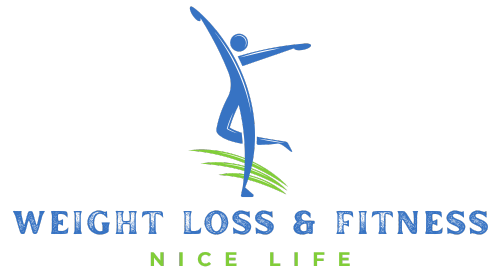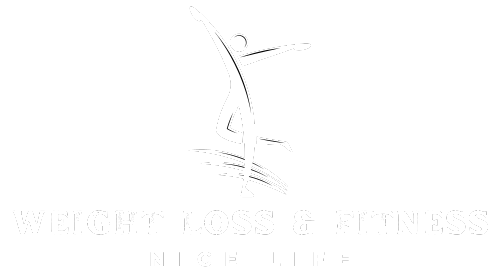I. Introduction
In this article, we will talk about belly fat exercise for women, but before that we will explain what excess belly fat means. Excess belly fat is a common concern for many individuals, particularly women.
It not only affects physical appearance but also holds significant implications for overall health and well-being.
Understanding the different types of belly fat and the associated health risks is essential for women to make informed choices about their fitness and lifestyle.
A. Explanation of Belly Fat Types
Belly fat can be categorized into two main types: subcutaneous and visceral fat. Subcutaneous fat is located just beneath the skin and is relatively harmless, contributing more to the appearance of a protruding abdomen.
On the other hand, visceral fat is situated deeper within the abdominal cavity, surrounding vital organs like the liver, pancreas, and intestines.
Visceral fat is metabolically active and releases hormones and chemicals that can influence various bodily functions.
B. Health Risks of Excess Belly Fat in Women
Excess belly fat, particularly visceral fat, is linked to several health risks that can disproportionately affect women. These risks include:
1. Cardiovascular Disease: Visceral fat is associated with an increased risk of heart disease. It can lead to elevated levels of bad cholesterol (LDL), triglycerides, and blood pressure, all of which contribute to the development of cardiovascular problems.
2. Type 2 Diabetes: Belly fat is a major contributor to insulin resistance, a condition where the body’s cells become less responsive to insulin. This can lead to high blood sugar levels and eventually result in type 2 diabetes.
3. Metabolic Syndrome: The accumulation of visceral fat is a key component of metabolic syndrome, a cluster of conditions that includes high blood pressure, high blood sugar, and abnormal cholesterol levels. This syndrome elevates the likelihood of developing heart disease, stroke, and diabetes.
4. Hormonal Imbalances: Excess belly fat can disrupt hormone balance in women, leading to irregular menstrual cycles, fertility issues, and even conditions like polycystic ovary syndrome (PCOS).
5. Cancer Risk: Some studies suggest a link between abdominal obesity and an increased risk of certain cancers, including breast and colorectal cancers, which can have a significant impact on women’s health.
6. Sleep Apnea: Belly fat can contribute to obstructive sleep apnea, a condition that disrupts normal breathing during sleep and can result in daytime fatigue and other health complications.
7. Psychological Well-being: The physical impact of excess belly fat can also affect women’s psychological well-being, potentially leading to low self-esteem, body image issues, and reduced quality of life.
II. Importance of Belly Fat Exercise for Women

Regular exercise plays a pivotal role in reducing belly fat and improving overall health. By understanding how exercise aids in burning calories and targeting specific fat deposits, women can make informed choices to achieve their fitness goals effectively.
A. Explanation of how exercise helps in burning calories and targeting belly fat
Exercise increases the body’s energy expenditure, leading to a calorie deficit that prompts the utilization of stored energy, including fat.
Specifically, when engaging in aerobic exercises like brisk walking, jogging, cycling, or swimming, the body taps into its fat stores for energy after it has depleted available glycogen reserves.
This process, known as lipolysis, aids in reducing overall body fat, including the excess fat around the abdomen.
Furthermore, exercise helps to boost the metabolism, even after the workout has concluded.
This phenomenon, known as the afterburn effect or excess post-exercise oxygen consumption (EPOC), causes the body to continue burning calories at an elevated rate for hours following physical activity.
B. Emphasis on the combination of cardiovascular and strength training exercises
Achieving optimal results in belly fat reduction involves a comprehensive approach that combines cardiovascular exercises and strength training.
Cardiovascular exercises, such as running or cycling, elevate the heart rate and promote the burning of calories during the workout.
These exercises also enhance cardiovascular fitness, contributing to overall health and stamina.
In tandem with cardiovascular workouts, incorporating strength training is crucial. Strength training exercises focus on building muscle mass, which has several benefits in the context of belly fat reduction.
Firstly, muscles have a higher resting metabolic rate than fat, meaning that even at rest, they burn more calories.
Additionally, a well-developed muscle mass helps to improve insulin sensitivity, aiding in the control of blood sugar levels and reducing the risk of fat accumulation.
Strength training also plays a critical role in shaping and toning the abdominal muscles, contributing to a firmer and more defined midsection.
Targeted core exercises engage muscles such as the rectus abdominis, obliques, and transverse abdominis, leading to improved posture and a stronger core overall.
III. Cardiovascular Exercises for Belly Fat Reduction

Cardiovascular exercises are a cornerstone of any effective belly fat exercise for women, and fat reduction strategy in general.
These exercises elevate the heart rate, burn calories, and contribute to overall fat loss. Women can choose from a variety of cardio workouts to tailor their routine to their preferences and fitness levels.
A. Overview of effective cardio workouts
1. Brisk Walking or Jogging: Walking and jogging are accessible and low-impact exercises that can be easily incorporated into daily routines. Brisk walking or jogging not only burns calories but also engages the core muscles, helping to strengthen the abdominal area over time.
2. Cycling: Whether on a stationary bike or cycling outdoors, this exercise engages the lower body muscles while providing an excellent cardiovascular workout. Cycling also helps to tone the legs and improve overall endurance.
3. Swimming: Swimming is a full-body workout that engages multiple muscle groups simultaneously. It is particularly gentle on the joints and offers resistance, making it an effective way to burn calories and improve cardiovascular fitness.
4. High-Intensity Interval Training (HIIT): HIIT involves alternating between intense bursts of activity and short recovery periods. This approach not only burns calories during the workout but also triggers the afterburn effect, causing the body to continue burning calories post-exercise. HIIT sessions can include exercises like sprinting, jumping jacks, or burpees.
B. Explanation of how cardio exercises promote fat loss, including from the abdominal area
Cardiovascular exercises are effective for fat loss due to their ability to increase energy expenditure. When the body’s demand for energy exceeds its immediate available sources, it turns to stored fat for fuel.
This process, known as lipolysis, leads to the breakdown of triglycerides in fat cells, releasing fatty acids into the bloodstream to be used as energy.
Cardio exercises have specific benefits for reducing belly fat:
1. Caloric Expenditure: Cardio workouts burn a significant number of calories, contributing to a calorie deficit that prompts the body to use stored fat for energy. This reduction in overall body fat includes fat deposits in the abdominal area.
2. Visceral Fat Reduction: Cardio exercises are particularly effective in reducing visceral fat—the type of fat that accumulates around organs. As cardio workouts increase heart rate and respiration, the body requires more oxygen and energy, leading to greater fat utilization, including visceral fat.
3. Hormonal Impact: Cardiovascular exercise can positively influence hormones related to fat storage and metabolism. For instance, regular cardio activity can improve insulin sensitivity, helping the body better regulate blood sugar levels and reduce fat accumulation.
4. Enhanced Metabolism: Engaging in consistent cardio workouts can boost metabolism, leading to more efficient calorie burning even when at rest. This sustained metabolic increase contributes to overall fat loss, including from the abdominal area.
IV. Strength Training Exercises for a Stronger Core

A strong core not only enhances physical appearance but also plays a pivotal role in reducing belly fat and improving overall functional fitness.
Incorporating targeted strength training exercises into a fitness routine can lead to a more sculpted midsection and contribute to better posture and core stability.
A. Introduction to the significance of a strong core in reducing belly fat
A strong core provides numerous benefits beyond aesthetics. It stabilizes the spine, improves balance, and supports proper posture.
When engaged in strength training exercises targeting the core, women engage muscles like the rectus abdominis, obliques, and transverse abdominis.
A well-developed core helps maintain a healthy alignment of the spine, making everyday movements more efficient and reducing the risk of injury.
B. Description of various strength training exercises targeting the core
1. Planks and Variations: Planks are a fundamental core exercise that involve holding a push-up-like position while engaging the abdominal muscles. Variations include side planks, forearm planks, and plank leg lifts, each targeting different aspects of the core.
2. Russian Twists: This exercise involves sitting on the floor with knees bent and feet raised, then twisting the torso from side to side while holding a weight or medicine ball. Russian twists focus on the obliques, contributing to a more defined waistline.
3. Leg Raises: Leg raises engage the muscles of the lower abdomen. While lying on your back, raise your legs vertically and lower them slowly without touching the ground. This exercise strengthens the lower part of the rectus abdominis.
4. Pilates Exercises: Pilates focuses on developing core strength, flexibility, and overall body control. Movements like the hundred, the roll-up, and the teaser engage the core muscles while emphasizing proper breathing and alignment.
C. Emphasis on maintaining proper form and technique to avoid injury
Proper form and technique are paramount when performing strength training exercises, especially those targeting the core. Incorrect form can lead to strain or injury. Some key points to keep in mind include:
- Engage the core muscles throughout the exercises to provide stability and protection to the spine.
- Avoid using momentum to complete repetitions; instead, move deliberately and controlled.
- Breathe steadily during each exercise, avoiding breath-holding which can increase intra-abdominal pressure.
- Start with appropriate resistance or weight, gradually increasing as strength improves.
- If unsure about proper technique, consider seeking guidance from a fitness professional or personal trainer.
V. Incorporating Full-Body Workouts for Balanced Fat Loss
Full-body workouts provide a holistic approach to fitness that goes beyond spot reduction. Engaging multiple muscle groups in a single session not only aids in balanced fat loss but also contributes to increased strength, endurance, and overall functional fitness.
Women can benefit from integrating full-body workouts into their routines to achieve comprehensive results.
A. Explanation of the concept of full-body workouts
Full-body workouts involve exercises that target various muscle groups across different regions of the body in a single session.
Unlike isolation exercises that focus on one specific muscle, full-body workouts are designed to engage major muscle groups and promote overall strength and calorie expenditure.
B. Benefits of engaging multiple muscle groups for overall fat reduction
Full-body workouts offer several advantages for fat reduction:
1. Increased Caloric Expenditure: Engaging multiple muscle groups requires more energy, leading to higher calorie burn during the workout.
2. Elevated Metabolic Rate: Full-body workouts stimulate the metabolism, causing the body to continue burning calories even after the workout has ended.
3. Efficient Use of Time: Full-body workouts can be time-efficient, allowing women to target several muscle groups in a single session.
4. Balanced Muscle Development: Working various muscle groups ensures balanced muscle development, reducing the risk of muscular imbalances and injuries.
5. Functional Fitness: Full-body exercises mimic real-life movements, enhancing overall functional fitness and making everyday activities easier.
C. Sample full-body workout routine for women
1. Squats: Squats are a compound lower-body exercise that targets the quadriceps, hamstrings, and glutes. They also engage the core for stability.
2. Push-ups: Push-ups are excellent for strengthening the upper body, including the chest, shoulders, and triceps. Modified versions can accommodate different fitness levels.
3. Lunges: Lunges work the quadriceps, hamstrings, and glutes, while also challenging balance and stability.
4. Bent-Over Rows: This exercise targets the upper back, lats, and biceps, contributing to a strong posture and back muscles.
Sample Full-Body Workout Routine:
- Warm-up: Begin with 5-10 minutes of gentle cardio and dynamic stretching
- Squats: 3 sets of 12 reps
- Push-ups: 3 sets of 10 reps
- Lunges: 3 sets of 10 reps per leg
- Bent-Over Rows: 3 sets of 12 reps
- Rest: 1-2 minutes between sets
- Cool-down: 5-10 minutes of static stretches
By including exercises like squats, push-ups, lunges, and bent-over rows in a full-body workout routine, women can target major muscle groups, elevate their heart rate, and burn calories effectively.
Remember that the weight or resistance level should be challenging but manageable, and proper form is crucial to prevent injuries.
VI. Importance of Nutrition and Lifestyle in Empowering Belly Fat Exercise for Women
A balanced approach to nutrition and lifestyle is integral to the success of any belly fat reduction journey for women.
While exercise is crucial, the role of diet, stress management, and adequate sleep cannot be underestimated in achieving and maintaining a healthy and toned abdominal area.
A. Brief discussion on the role of diet in reducing belly fat
Diet plays a pivotal role in belly fat reduction. While exercise helps burn calories, a proper diet ensures that the calories consumed are of high nutritional value.
Consuming nutrient-dense foods and managing portion sizes are key to creating a calorie deficit necessary for fat loss.
B. Tips for making healthier food choices
Making healthier food choices can support belly fat reduction:
1. Balanced Macronutrients: Aim for a balanced intake of carbohydrates, proteins, and healthy fats to fuel workouts and support muscle recovery.
2. Whole Foods: Focus on whole, unprocessed foods such as fruits, vegetables, lean proteins, whole grains, and nuts.
3. Portion Control: Be mindful of portion sizes to avoid overeating, even with healthy foods.
4. Hydration: Stay hydrated with water and limit sugary beverages, as dehydration can affect metabolism and energy levels.
5. Limit Added Sugars and Processed Foods: Minimize consumption of sugary snacks, sweets, and processed foods that contribute to excess calorie intake and bloating.
6. Fiber Intake: Include fiber-rich foods like vegetables, fruits, and whole grains to promote satiety and healthy digestion.
C. Highlighting the significance of stress management and sufficient sleep
Stress and lack of sleep can negatively impact belly fat and overall health:
1. Stress Management: Chronic stress can lead to an increase in cortisol, a hormone linked to fat storage, particularly around the abdominal area. Practices like meditation, deep breathing, and yoga can help manage stress.
2. Adequate Sleep: Sleep is crucial for hormone regulation, metabolism, and overall well-being. Aim for 7-9 hours of quality sleep per night to support fat loss and muscle recovery.
Remember that the interaction between exercise, nutrition, stress, and sleep is complex. A balanced approach that combines regular physical activity, a healthy diet, stress reduction techniques, and sufficient sleep creates an environment conducive to successful belly fat reduction.
VII. Tailoring Exercises to Individual Needs and Fitness Levels
Personalization is key when embarking on a journey to reduce belly fat through exercise. Recognizing individual needs, consulting professionals, and considering factors like fitness levels and medical conditions are essential for creating a safe and effective workout plan.
A. Emphasis on consulting a fitness professional or healthcare provider before starting an exercise regimen
Before beginning any exercise routine, it’s crucial to consult with a fitness professional or healthcare provider.
This is especially important if you have pre-existing medical conditions, are new to exercise, or have been inactive for an extended period.
These experts can provide guidance based on your unique health status and goals.
B. Consideration of fitness levels and any pre-existing medical conditions
Every woman’s starting point is different, and tailoring exercises to individual fitness levels is vital for safety and progress.
If you have medical conditions, injuries, or concerns, your fitness plan should be designed to accommodate those factors.
For example, individuals with joint issues may need low-impact exercises, while those with cardiovascular concerns might require specific modifications.
C. Gradual progression of intensity and duration to avoid overexertion
Building a strong foundation is crucial in preventing injuries and achieving long-term results. Slowly escalate the intensity and duration of your workouts, allowing your body sufficient time to acclimate.
Pushing too hard too soon can lead to burnout, overtraining, or injuries. This approach allows for steady progress while minimizing the risk of setbacks.
Incorporating these considerations into your belly fat exercise for women plan ensures that you are working within your limits and avoiding unnecessary strain.
Keep in mind that progress is unique to each individual, and it’s important to focus on your own journey rather than comparing yourself to others.
VIII. Staying Motivated and Tracking Progress
Maintaining motivation throughout your belly fat reduction journey is crucial for long-term success. By employing strategies such as tracking progress, setting achievable goals.
A. Suggestion of keeping a fitness journal to track exercises and progress
Keeping a fitness journal can be a powerful tool to track your exercises, note your accomplishments, and monitor your progress.
Recording details such as workout routines, weights used, repetitions performed, and how you felt during the workout can provide a tangible sense of achievement over time.
This journal can also help identify patterns and areas for improvement.
B. Setting realistic goals and celebrating achievements
Establishing realistic goals is essential for maintaining motivation. Set both short-term and long-term goals that are achievable and measurable.
Celebrate each milestone reached, whether it’s lifting a heavier weight, completing a certain number of repetitions, or reaching a specific workout frequency.
Acknowledging your accomplishments boosts confidence and sustains motivation.
Remember that motivation can ebb and flow, and it’s essential to adopt strategies that resonate with your personality and preferences.
By incorporating these practices, you can maintain a positive and empowered mindset throughout your belly fat exercise for women journey.
IX. Addressing Common Myths and Misconceptions
Navigating the realm of fitness can sometimes be clouded by myths and misconceptions. By dispelling common misunderstandings, women can approach their belly fat reduction journey with a clearer understanding of what truly contributes to effective and sustainable results.
A. Dispelling myths about spot reduction
One of the most prevalent misconceptions is the idea of spot reduction—targeting fat loss in a specific area.
In reality, fat loss occurs throughout the body, not just in the area being exercised. While exercises targeting the abdominal muscles can strengthen and tone the core, they alone won’t eliminate fat exclusively from the belly.
Adopting a comprehensive approach that includes both cardio and strength training, alongside a balanced diet, is key to achieving overall fat reduction.
B. Clarifying misconceptions about specific exercises leading to overnight results
Another common misconception is the belief that specific exercises will yield instant results. The journey to reducing belly fat is gradual and requires consistency, patience, and a holistic approach.
While certain exercises can help strengthen and tone muscles, visible results take time. Rapid changes are often unsustainable and may not promote lasting health benefits.
A realistic perspective acknowledges that achieving a leaner abdominal area involves a combination of smart exercise, nutrition, and lifestyle choices.
By addressing these myths and misconceptions, women can approach their belly fat reduction journey with informed expectations.
A well-rounded plan that incorporates balanced exercise, proper nutrition, and a sustainable mindset is the foundation for achieving enduring results.
X. Conclusion
A. Recap of key points regarding belly fat exercise for women
Throughout this exploration of belly fat exercise for women, several key points have emerged:
- Belly fat comprises subcutaneous and visceral fat, with the latter posing more health risks.
- Cardiovascular exercises, including brisk walking, jogging, cycling, swimming, and HIIT, aid in burning calories and reducing overall body fat.
- Strength training exercises targeting the core, such as planks, Russian twists, leg raises, and Pilates, contribute to a stronger midsection.
- Full-body workouts provide a balanced approach to fat loss by engaging multiple muscle groups and promoting calorie burn.
- Nutrition, stress management, and sufficient sleep are vital components of a successful belly fat reduction journey.
- Individual needs, fitness levels, and medical conditions should guide exercise choices and progression.
B. Encouragement for women to adopt a holistic approach to fitness and health
As women embark on their belly fat reduction journey, it’s important to recognize that health is not solely defined by physical appearance. True well-being encompasses physical, mental, and emotional aspects. Embracing a holistic approach involves:
- Cultivating self-love and body positivity, focusing on overall health rather than fixating on a specific body part.
- Prioritizing nourishing foods that support energy, immunity, and vitality.
- Incorporating stress reduction techniques such as meditation, mindfulness, and hobbies.
- Ensuring adequate sleep for recovery and hormone balance.
- Celebrating progress and achievements along the way.
Remember that every woman’s journey is unique, and there is no one-size-fits-all solution.
By committing to a balanced combination of exercise, nutrition, stress management, and self-care, women can achieve their belly fat reduction goals while fostering a positive relationship with their bodies and overall well-being.













No Comments